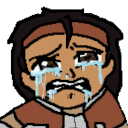I’m trying to get back into 3d pruning after a long hiatus.
I found my old Anycubic Chiron, and thought I’d give it a go. Smaller prints seem fine. But anything longer than an hour. Come off like this. I say that what I mean is I excitedly take the multi hour print off the bed in excitement and for get to look at how it is.
The two longer prints definitely were at least in part still adhered to the print bed despite it being cold.
My next plan is to set a print away and check on it every hour or so and see if one side of the print has warped mid print (so far I’ve been printing before I go to bed, and only watching the initial couple of layers).
My guess it that the (pla+) filament is warping mid print… Its old I’ll admit. But was stored in an airtight container with silica packs, and I dried it out before using. But any of your thoughts would be greatly appreciated!
Try raising the bed temperature a little, and maybe add brims to your prints for better bed adhesion. Another thing to try if the above doesn’t work is glue.
Here’s a guide that walks you through the process of fixing the warping issue: https://www.3dsourced.com/rigid-ink/3d-prints-warping-curling-how-to-prevent/
My guess is it’s warping from thermal contraction as it cools. PLA is easier to print with than, say, ABS, because it doesn’t contract as it cools quite as much, but it still contracts some, and each successive layer, it’s like layering on rubber bands, until it pulls off.
there’s several things that can help it. The first is to use a heated bed. (you want to set it for moderately below the glass transition temperature PLA+ is typically around 50-60 in actual temp. I’d suggest measuring the actual surface temp with an IR thermometer… if it’s glossy, take a sheet of paper or a single-layer bed leveling test print and place it on top.
If you’re already using a heated bed and the temp checks out, the next option is to print a brim up around the part. this increases the surface area. Additionally you can increase the skirt height to create a wall that traps air and keeps the part warmish (slightly lower than bed temp, typically.) You don’t need to go all the way up, even an inch will help.
Going a step further, you can set up a box over the printer as a make shift enclosure. Or, if you’re looking for a more permanent solution, I like using rigid insulation foam- you can get it from your big box hardware store for pretty cheap. 1/4" 1/2" sizes are easy to work with and you can use PVA glue to hold it together, or most epoxies. (hot glue if you’re careful, but it’ll melt if you put too much on.) for just a one-off project, you can cut it using a box cutter, but if you use it a lot, there’s hot knife cutters (or wire cutters,) that work wonders… but that’s another topic.
Yep, you’ve got some warping, the longer and skinnier the print the more it wants to warp. Pla isn’t too bad for warping typically, but PLA+ is an alloy of pla and petg and is more finnicky. Not nearly as much as pure petg is but the point of it is you get an improvement of the physical properties for only being a bit more fisdly to print. For prevention, there’s a bunch you can do. Simplest is clean your print bed, rubbing alcohol or just dish soap and water have both worked well for me in the past. Getting a more adherent print bed like textured PEI or just layering it with something your print sticks better to like hairspray, painters tape or a layer of gluestick helps. Upping the bed temp can help, I think because you get less of a temperature differential between the plastic coming out of the nozzle and the first few layers so there’s less force pulling on it. You can also add a brim or less recommend a raft in the slicer.
One advice not yet mentioned, if it is your design, try to design with printing in mind. Add stress relief blocks to the model. Add corner adhesion helpers.
There are guides online that will explain this a lot better than I could.



